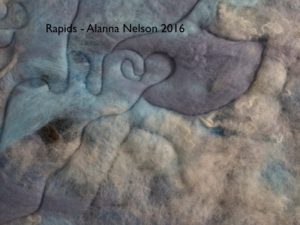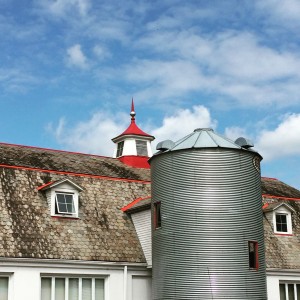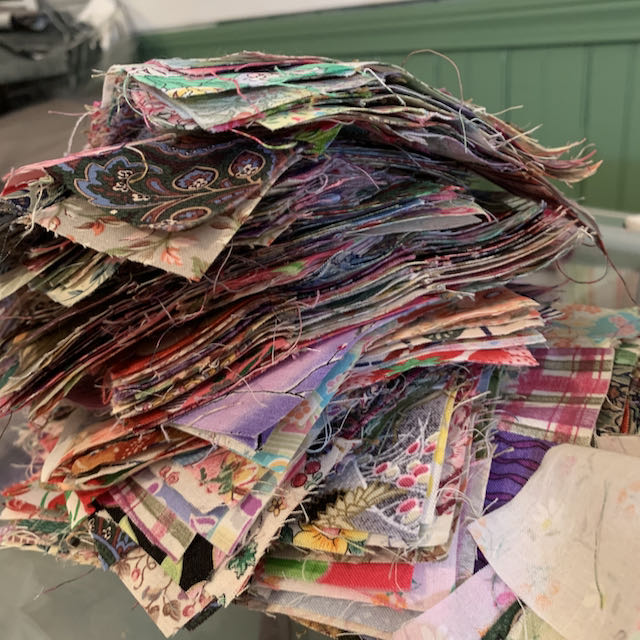
Luke Haynes
“Because let me not be defined by my gender! Let me not have to create works that are a reflection of the single most obvious difference between me and the standard!!
Let me not be defined by my “otherness” but rather my “sameness”!!!”
Luke Haynes after his interview with Abby Glassenberg’s podcast While She Naps
I miss the quarterly SAQA MARI meetings (Studio Art Quilt Associates Massachusetts Rhode Island Chapter). Heading out on those Saturday mornings were special treats. The meeting format was pretty straightforward: chitchat, then a presentation on technique or arts management (how I loved the meetings where Vicki Jensen at ProChem shared her vast knowledge), more chitchat over packed lunch and then show and tell. If not carpooling with another art quilter, I’d detour to discover destinations near the meeting location. Many times, though, the in person meeting would drive me straight back to my studio for play and progress on my own work.
The SAQA MARI programming committee adapted with the times and now offers Zoom alternatives. On May 16, the guest speaker was Luke Haynes. His express ride through his approach, inspiration and exploration of quilt as object, as sculpture, made from used textiles and celebrating himself, his community and quilt history lingered long after I clicked “Leave Meeting.”
If you don’t know Luke’s work, think big. We’re talking at least seven feet square densely quilted three layers, made from used textiles and using traditional quilt blocks as the backdrop for a portrait. Inspired by famous compositions and iconic paintings, his portraits of friends and people in his neighborhood inject his quilts with contemporary sense of place and immortal remembrance. These art quilts hang on walls in galleries and also grace beds. Quilts often are anonymous works, signed on the back. Luke signs in all caps on the front, and even makes his name part of the composition.
A quilter after my own heart, Luke photographs his beautiful work outdoors, draped in stunning natural settings, wrapped around people. These objects transform space as it transforms as a work of art. His objects are beautiful and useful. Luke chooses to challenge the role and place for art. What do we value? What is desirable and worth commemorating? How we carry those parameters forward?
Sometime in the mid 1990s, Michael James shook up the quilt world by saying something to the effect of quilting will not move forward as an art form until quilters create art. I would have read this in Quilter’s Newsletter magazine or perhaps the International Quilt Association. Making quilts near Rome in those days, when the internet was young, I found James’ statement thought provoking and I tried to get my head around his perspective.
At one of the first quilt exhibits in Italy, I remember a surprised and perplexed visitor looking at my work and exclaiming, “This isn’t a quilt. It’s art.”
In her mind, art was a world apart. She came for quilts, that iconic American bed covering whose popularity bubbled up in those days. It was another expression of “made by hand” that Italians cherish. While textile hand work was overwhelmingly women’s work, an “artigiana/o” or artisan is anyone who creates or manufactures objects. Tailors, cheesemakers, boat manufacturers all are artisans.
After his 45 minute presentation, question and answer time wasn’t as spirited as I thought it may be. Was I the only one who was still taking it in? Did others in the mainly female over 60 audience find themselves pondering questions afterwards? The first question was more of a statement: she pondered the perspective difference and vision he had. Is she still thinking about it? I checked out the SAQA MARI Facebook group, and the conversation was sparse.
I love the way Luke wraps himself, his neighborhood and the way galleries are happy to accept his work as art. What would Michael James think?
Maybe that conversation will happen some day. In the meantime, I’ll head back to my studio and keep on making things.
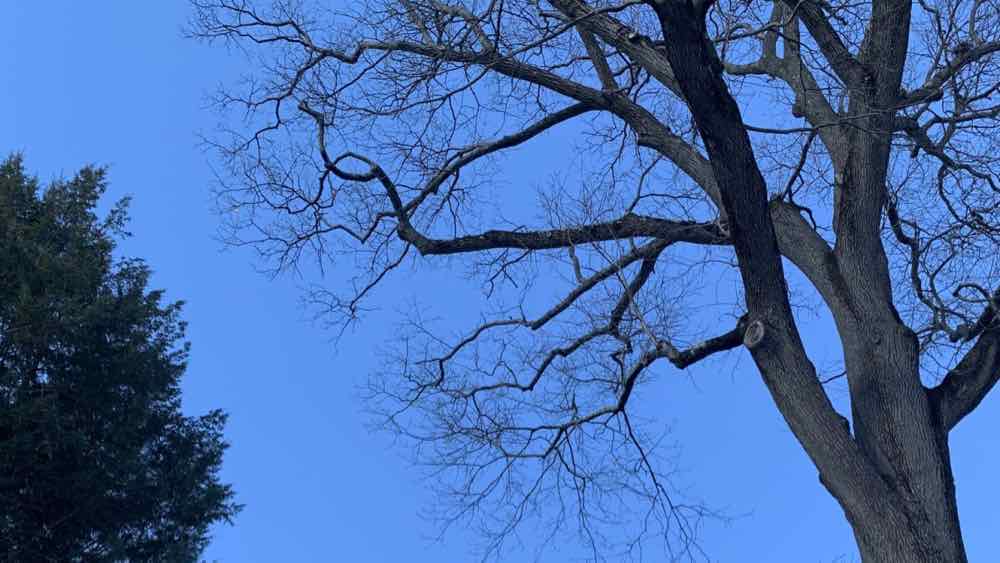
Thank you to the artists whose legacies sustain us today. Thank you to today’s artists whose creations and connections lead us toward tomorrow.
Mary Oliver’s poetry is one way I slow down to appreciate the beauty of existence.
Wishing you a fulfilling journey.

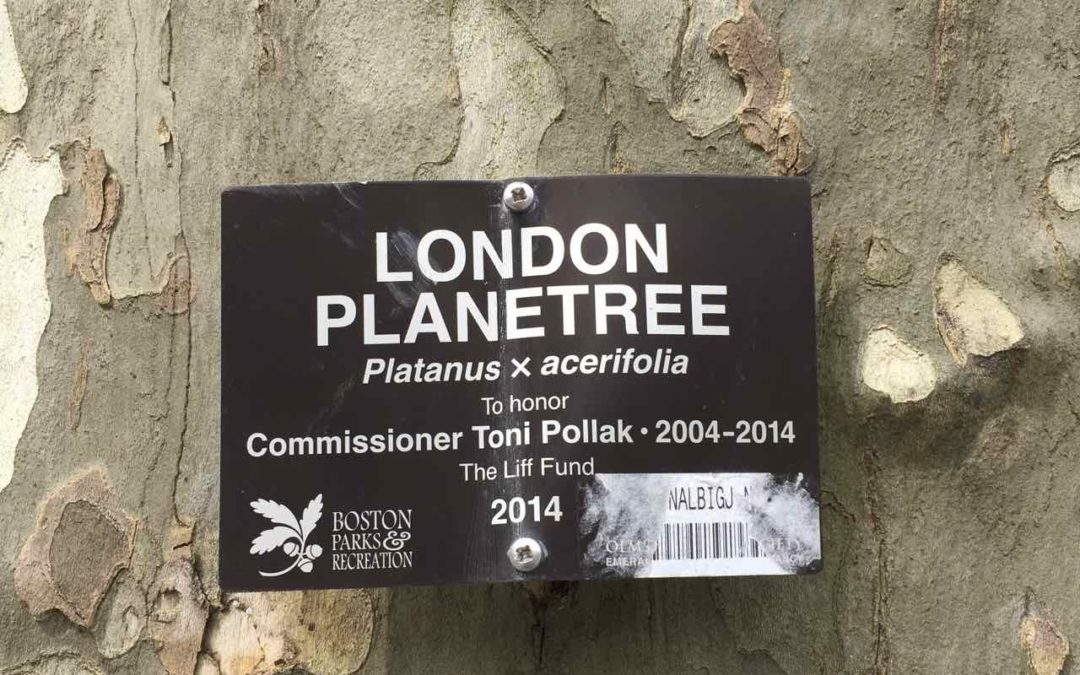
 Tree bark deserves a pause. For a statically significant portion of our lives together, my hub waits as I stop at another sycamore (or plane tree or plantano, as it is known in Italian). Pulling out my camera, the bark’s earthy, rich textures and colors are a testament to the tree’s life journey. Snap! Another amazing specimen for my collection. Isn’t it magnificent?
Tree bark deserves a pause. For a statically significant portion of our lives together, my hub waits as I stop at another sycamore (or plane tree or plantano, as it is known in Italian). Pulling out my camera, the bark’s earthy, rich textures and colors are a testament to the tree’s life journey. Snap! Another amazing specimen for my collection. Isn’t it magnificent?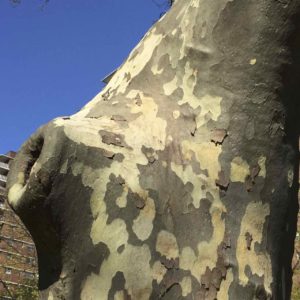 Years ago, hub used to groan. Now he accepts and adapts, realizing that this is just part of our life together.
Years ago, hub used to groan. Now he accepts and adapts, realizing that this is just part of our life together.
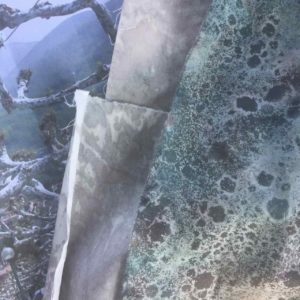

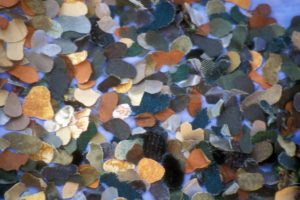

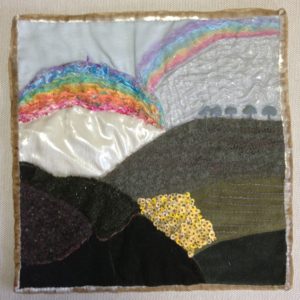
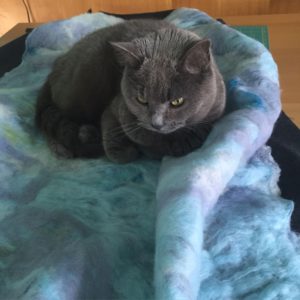 With several nuno felt pieces in hand, I headed over to
With several nuno felt pieces in hand, I headed over to 